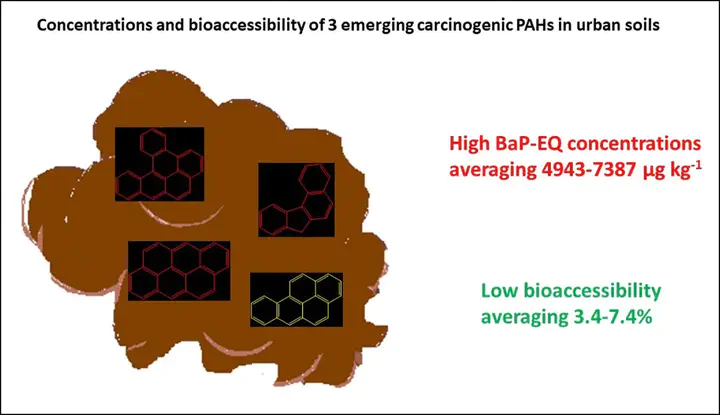Emerging PAHs in urban soils: concentrations, bioaccessibility, and spatial distribution

Abstract
Polycyclic aromatic hydrocarbons (PAHs) are ubiquitous organic contaminants, with soil being the most important sink. This study determined the concentrations, bioaccessibility and spatial distributions of 6 emerging PAHs in Orlando and Tampa urban soils. They included 3 carcinogenic (anthanthrene, 7H-benzo[c]fluorene, and dibenzo[a,l]pyrene - 3cPAHs) and 3 non-carcinogenic (dibenzo[a,e]pyrene, dibenzo[a,i]pyrene and dibenzo[a,h]pyrene) PAHs. Based on benzo[a]pyrene-equivalent, the 7 USEPA priority cPAHs (7cPAHs) and 3cPAHs in Orlando soils averaged 452 and 7387 μg kg−1, and Tampa soils 802 and 4943 μg kg−1, respectively, with ∑3cPAHs being 6–16 times greater than ∑7cPAHs. Based on ArcGIS maps, the concentrations of ∑3cPAHs in commercial sites, business district and heavy-traffic areas were higher. The concentrations of ∑3cPAHs have not been reported, but they had significant impacts on risk assessment of urban soils due to their high relative potency factor. However, their bioaccessibility based on n-butanol extraction in soils of both cities were low, averaging 3.4–7.4%. Therefore, to accurately assess the risk of soils contaminated with PAHs, emerging cPAHs together with USEPA 7cPAHs and their bioaccessibility need to be considered.